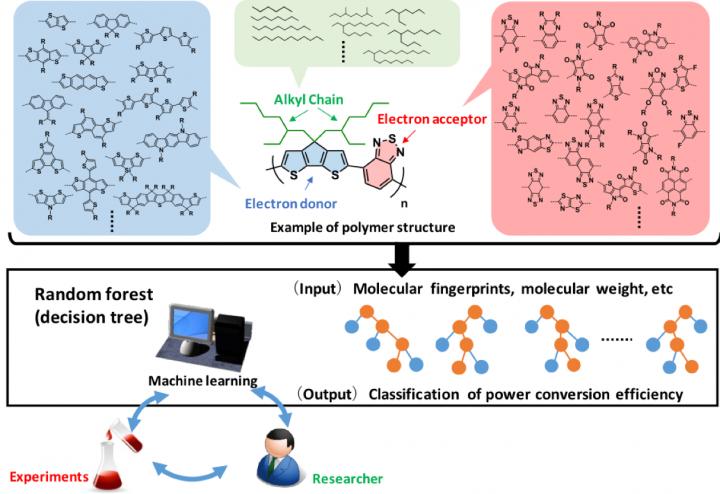A scientific journal article published by scientists from Osaka University’s school of applied sciences considers the use of artificial intelligence in designing new material combinations for organic photovoltaic (OPV) cells.
OPVs have struggled to reach commercially competitive power conversion efficiencies, even though several companies worldwide have invested large sums into R&D related to the technology. Organic photovoltaics are made from inexpensive, lightweight materials are safe to handle and benefit from easy production. However their power conversion efficiencies (PCEs) are still too low for full-scale commercialization. PCE depends on the organic and polymer layers and chemists have experimented with different combinations without finding a sufficient improvement in efficiency to date.
Big data informatics can help scientists navigate large, complex datasets, identifying potentially important statistical trends. The Japanese scientists mentioned in the article fed data from 1,200 OPVs sourced from around 500 studies into an artificial intelligence package, to navigate the otherwise time consuming trial-and-error phase. By analysing the performances of each material used, and considering its interplay with other compounds, the machine learning software can draw conclusions about possible combinations of different organic molecules and polymers faster than humans could. The AI makes performance predictions of the new material constellations it generates.
According to the Japanese university's scientists, the prediction for the first tested material constellation was wrong, as the material under-performed. They stress, however, additional data added to the system will improve the process.
“Machine learning could hugely accelerate solar cell development since it instantaneously predicts results that would take months in the lab,” says Akinori Saeki, co-author of the article published in the Journal of Physical Chemistry Letters. “It's not a straightforward replacement for the human factor – but it could provide crucial support when molecular designers have to choose which pathways to explore.”
This content is protected by copyright and may not be reused. If you want to cooperate with us and would like to reuse some of our content, please contact: editors@pv-magazine.com.




2 comments
By submitting this form you agree to pv magazine using your data for the purposes of publishing your comment.
Your personal data will only be disclosed or otherwise transmitted to third parties for the purposes of spam filtering or if this is necessary for technical maintenance of the website. Any other transfer to third parties will not take place unless this is justified on the basis of applicable data protection regulations or if pv magazine is legally obliged to do so.
You may revoke this consent at any time with effect for the future, in which case your personal data will be deleted immediately. Otherwise, your data will be deleted if pv magazine has processed your request or the purpose of data storage is fulfilled.
Further information on data privacy can be found in our Data Protection Policy.